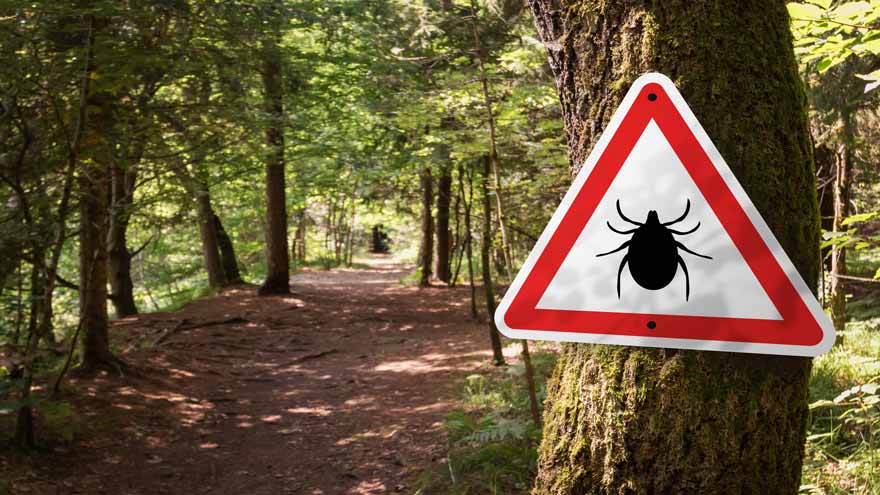Lyme Disease: 3 Things You Should Know
November 01, 2022

Keeping an eye out for early signs of Lyme disease, implementing prevention techniques and understanding testing and treatment options can go a long way in maintaining your health. We consulted with Peter O’Reilly, PA-C at Renown Medical Group – South Carson to learn more.
1. Recognizing the Signs of Lyme Disease
Lyme disease is extremely easy to misdiagnose, given that most of its early signs and symptoms mimic those of other conditions, such as COVID-19.Common Lyme Disease symptoms include:
- Fever
- Chills
- Joint or muscle pain
- Swollen glands
- Extreme fatigue
- Headache
The primary initial symptom that occurs in about 80 percent of Lyme disease cases is a “bulls-eye” rash that spreads around the site of the tick bite – called “erythema migrans.”
Tick bites can be hard to find and not everyone gets the classic bullseye rash, making Lyme disease difficult to self-diagnose. O’Reilly suggests talking to either your primary care doctor or infection doctor as soon as possible if you’re concerned about Lyme disease.
2. Avoiding Lyme Disease
To avoid Lyme disease, you will need to protect yourself from deer tick bites. Most U.S. Lyme disease cases occur in the Midwest and the northeastern United States. “Folks should be extra aware of Lyme symptoms, particularly after visiting places where it is very common, like the Northeast or Coastal California,” advises O’Reilly. You’re less likely to get Lyme disease in northern Nevada, experts say, as ticks don’t like the dry and warm climate. Nevertheless, it’s not impossible, so taking precautions can help you prevent contracting Lyme disease.After visiting an area likely to have ticks, such as wooded or grassy areas, check yourself and others (including pets!) thoroughly. If you’re spending a lot of time outdoors, wear long sleeves and pants. According to the Centers for Disease Control (CDC), repellants containing DEET, picaridin and oil of lemon eucalyptus are effective at fending off tick bites.
If you find a tick bite, it’s imperative to remove it promptly and properly. Bacteria from a tick bite can enter your bloodstream if the tick stays attached to your skin for 36 to 48 hours or longer. When you remove a tick within two days your risk of developing Lyme disease is low.
What you should do if you find a tick
3. Understanding Lyme Treatment
Lab tests that identify antibodies and bacteria can confirm or rule out a Lyme diagnosis. These tests are most reliable a few weeks after an infection, after your body has time to develop antibodies.
Most people diagnosed with Lyme disease are treated and cured with a regimen of antibiotics. O’Reilly stresses the importance of identifying and treating Lyme disease early as it can become progressively harder to treat with time. In general, recovery will be quicker and more complete the sooner treatment begins. About 10 percent of people continue to have symptoms that linger including difficulty concentrating, aches and fatigue.